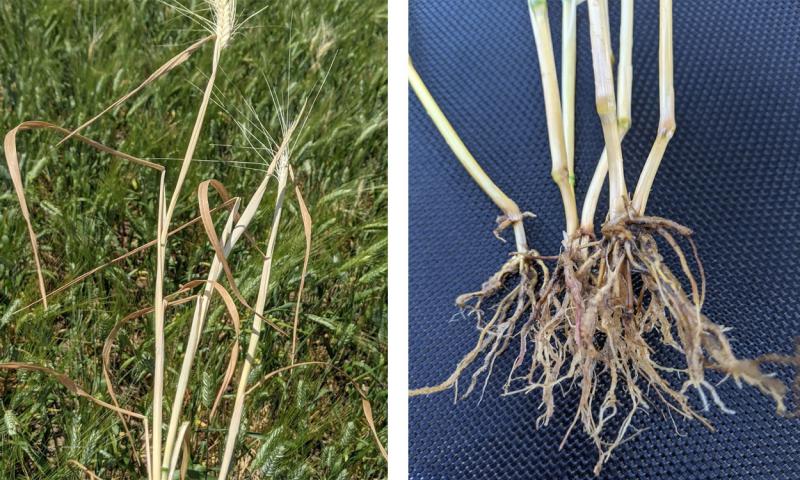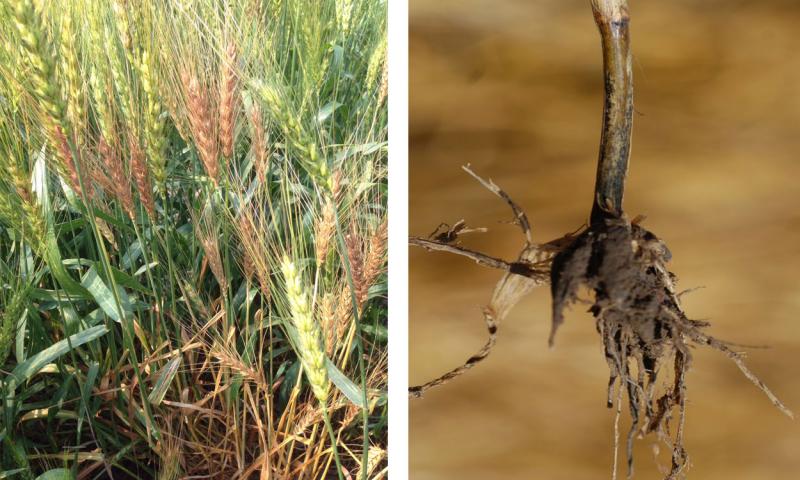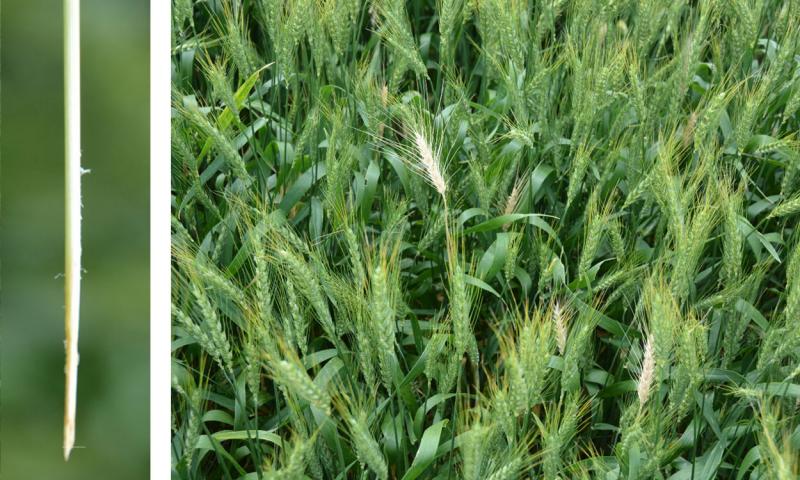Originally Published: June 25, 2021
Written collaboratively by Emmanuel Byamukama, former SDSU Extension Plant Pathologist, Connie Strunk and Shaukat Ali.
Several diseases and disorders can develop in wheat heads. It is important to scout and determine which diseases and disorders are affecting your wheat crop. This will help in making management decisions and hence minimize the impacts of these diseases or insect damage. The following diseases and insect damage are being observed in wheat this season.
Root and Crown Rots

There are three common diseases of wheat roots and crowns, namely common root rot (Bipolaris sorokiniana), take-all (Gaumanomyces graminis var. tritici) and Fusarium foot and crown rot (Fusarium spp). Infection of wheat by the root and crown rot pathogens takes place early in the season, but symptoms appear after wheat heading. Plants undergoing moisture stress also have an increased chance of root and crown rot occurrence.
Wheat plants with root and crown rots exhibit entire spikes bleached (Figure 1). Sometimes the bleached-head symptom may be confused with Fusarium head blight (FHB or scab). However, due to dry and hot weather conditions this year, FHB risk has been very low, and we have not observed FHB in the monitored wheat fields.

The best way to determine if the plants have root and crown rots is to gently uproot the plants and examine the crown, sub-crown and roots. Roots may be rotted and the sub-crown discolored (Figure 1). For plants with take-all, the crown and first nodes have a glassy-black appearance (Figure 2).
Management
Crop rotation and reducing plant stress can help in limiting root and crown rot diseases. Fields with a history of root and crown rots may benefit from fungicide seed treatment. See the latest South Dakota Pest Management Guide - Wheat for fungicide seed treatment options for wheat.
Wheat Stem Maggot Damage

Adult wheat stem maggot flies (Meromyza Americana) emerge in June, and shortly after the female flies lay eggs on the leaves and stems of wheat and other grasses. When the larvae hatch, they crawl beneath the leaf sheath and then burrow into the stem. They will remain in the stem and feed near the flag leaf node. This feeding results in the peduncle becoming partially severed from the stem. In turn, the head of infested plants will dry and turn white (Figure 4). Wheat stem maggot damage can be determined by gently pulling out the bleached wheat head. On plants that are infested by wheat stem maggot, the entire wheat head will easily pull out of the stem due to the feeding. There are no management recommendations for wheat stem maggots.


